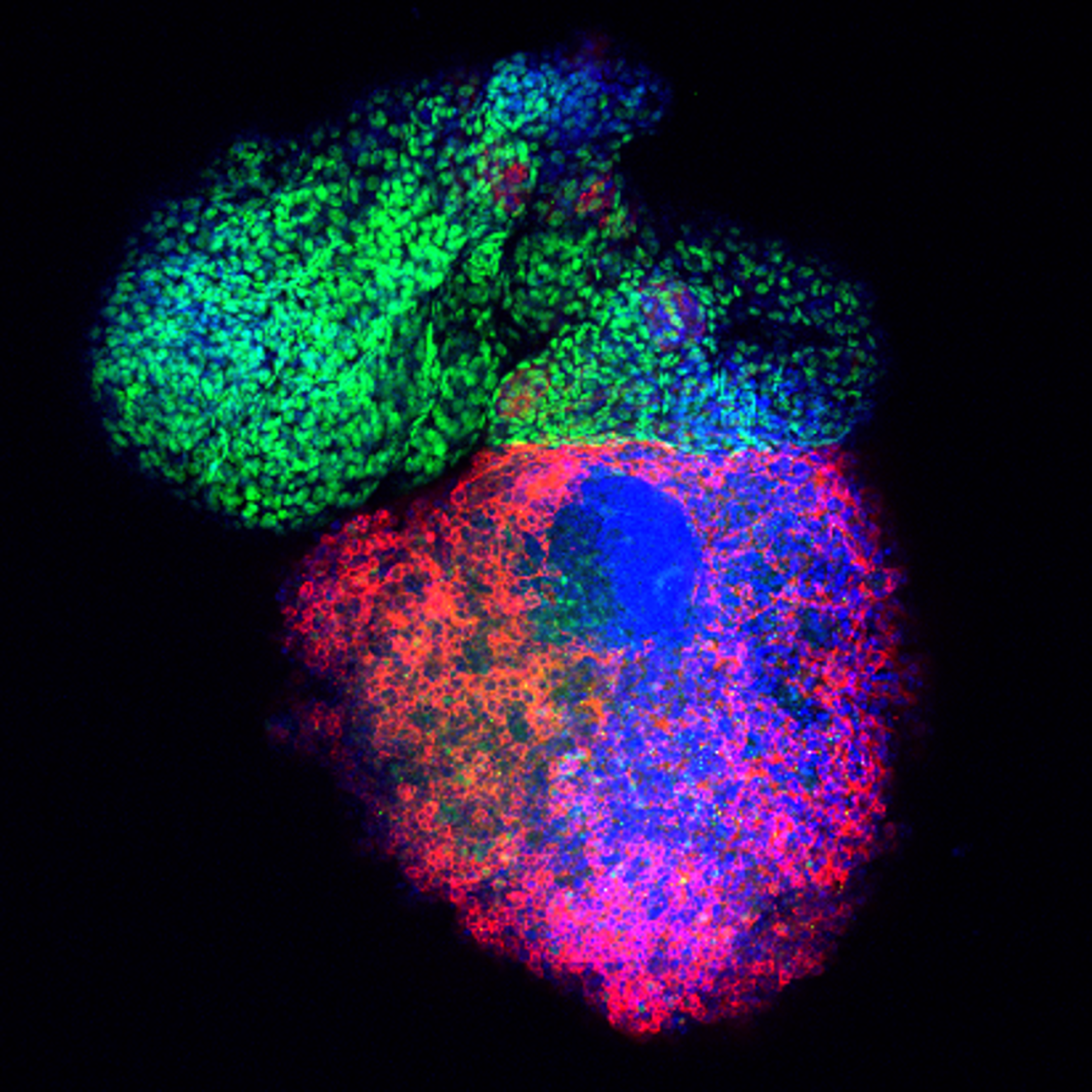Brett Volmert is a Biomedical Engineering Ph.D. candidate in the College of Engineering. In a recent study, Volmert described a method for the creation and growth of mini human hearts, termed “heart organoids”. He presented the research during the MSU Ignite Talks.
Heart disease is the leading cause of death around the world, with over 18 million deaths occurring each year due to heart diseases. This equates to over 50,000 deaths every day from heart disease alone. Another pressing concern is congenital heart defects which is the most common type of birth defect in newborn babies in the United States. Over 40,000 newborns are born each year with a heart defect.
For the past 10 years I’ve been dreaming of the opportunity to contribute to the field of cardiology and engineering. My grandfather died from a heart attack long before I was born, and my family has a history of heart disease. In high school, I came across the science of stem cells while researching topics to write an argumentative essay for my literature course. Learning about how stem cells have the power to become any cell or organ in the body (hint: this is important!) and pairing this with my family’s cardiovascular history, my dream was ignited.
Traditionally, scientists use animals and cells to investigate heart development and disease. Nonetheless, these models fail to fully capture the complexity of the human heart and often lead to misleading or ineffective results.
Recently at Michigan State University, we have developed a method to create mini human hearts in the lab, termed “heart organoids”, from stem cells. These heart organoids have blood vessels, they have all the main cell types as the human heart, and even beat. They are about half the size of a grain of rice. Even so, they represent an incredibly powerful tool for investigating heart development and disease like never before.
We create the heart organoids by mimicking the events of embryonic development. Stem cells have the power to become any cell or organ in the body. By manipulating this ability, we can direct their fate and guide them into becoming the heart.
These heart organoids allow us to study, with greater precision than ever before, how the human heart forms and how diseases are manifested. They can serve to better investigate the role of blood vessels in disease, to study better ways to treat or prevent arrythmias, to study the roles of atria and ventricles in healthy vs. disease states, and so much more.
Something that takes all of this to the next level is the technology called “Induced pluripotent stem cells”. By simply taking a small sample of your skin or blood, we can transform that into stem cells. Then, we can use your own stem cells to grow your own mini heart.
This technology will elevate the study of heart development and disease to newfound heights and sets the stage for creating fully synthetic and transplantable human hearts.
I recently had the honor of presenting my research at the MSU Ignite talks along with eight other shining MSU researchers. Disseminating science to a broader audience is a delightful challenge, and the MSU Ignite talks offered an energetic and inspiring atmosphere filled with accomplishment and pride for all who bleed green; I hope the readers will join us for next year’s talks on March 14, 2024!
Michigan State University has illuminated the bountiful and rewarding field of science to me through a plethora of fantastic professors, engaging colleagues, and beautiful ambiances.
MSU offers a fruitful experience for all who traverse it, bestowing a journey that is ripe with adventure and brilliance.

